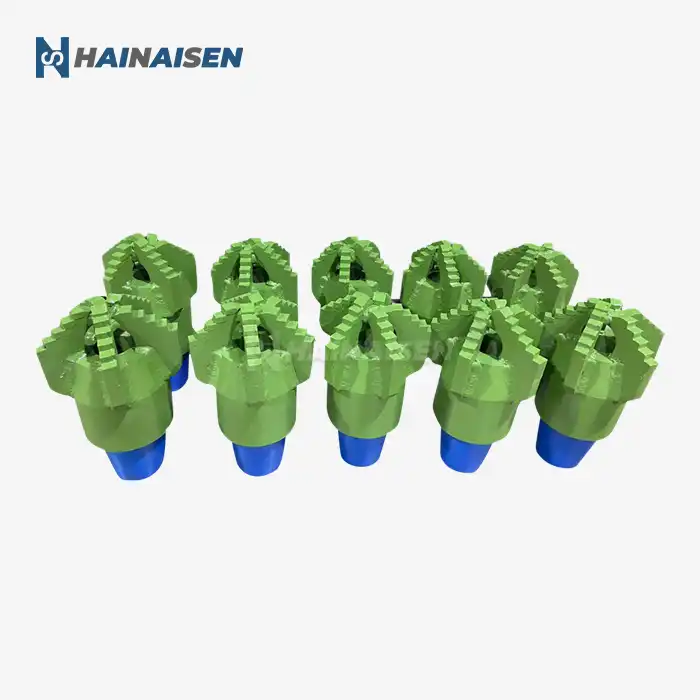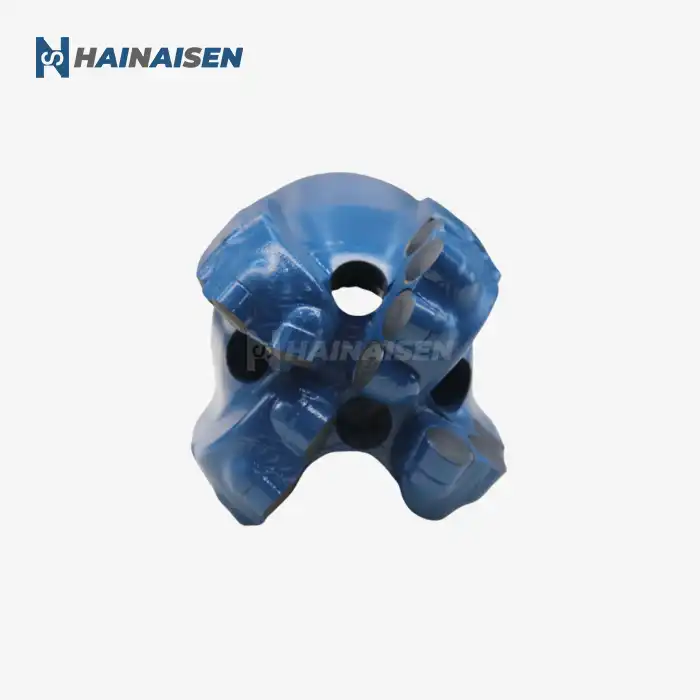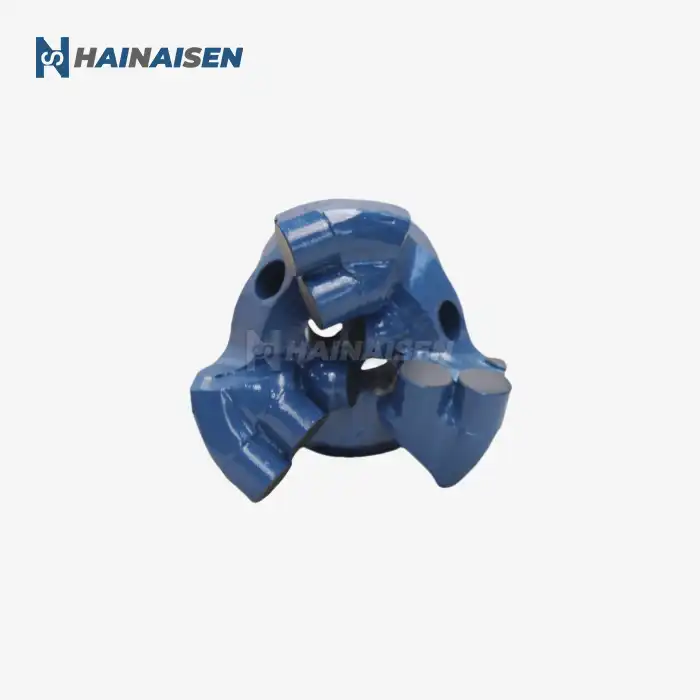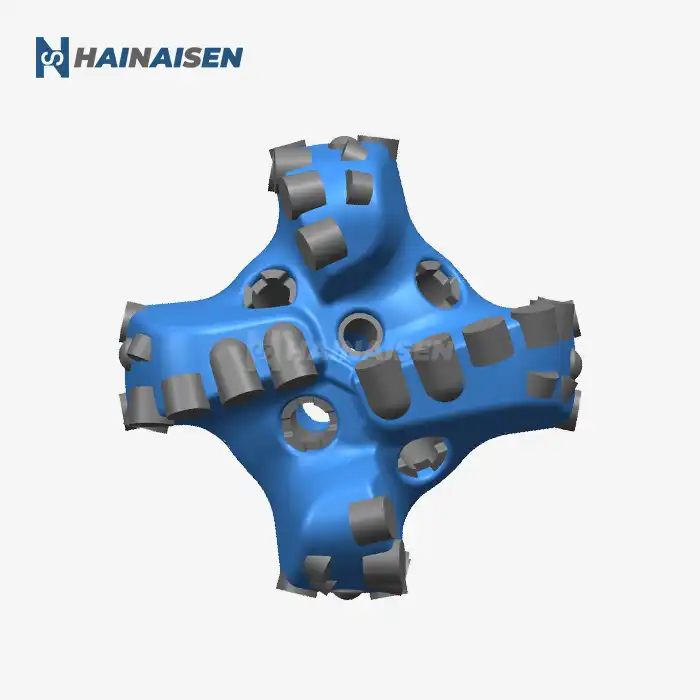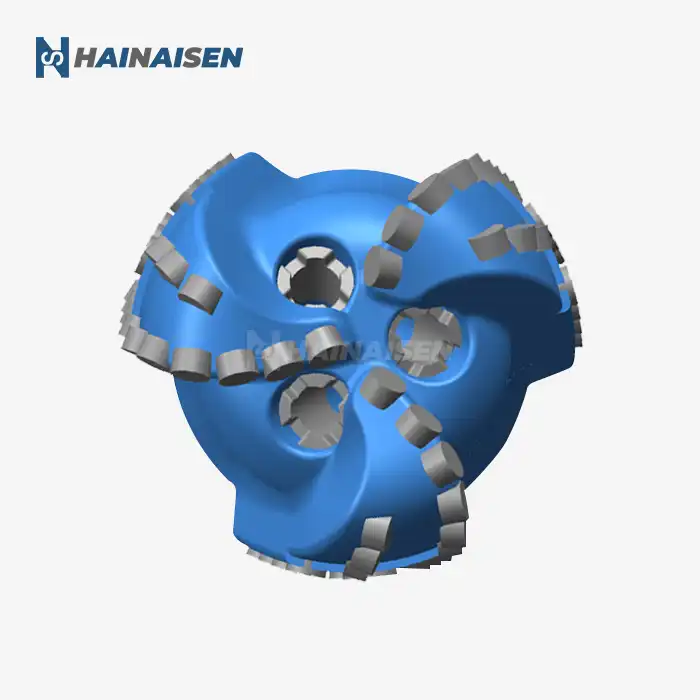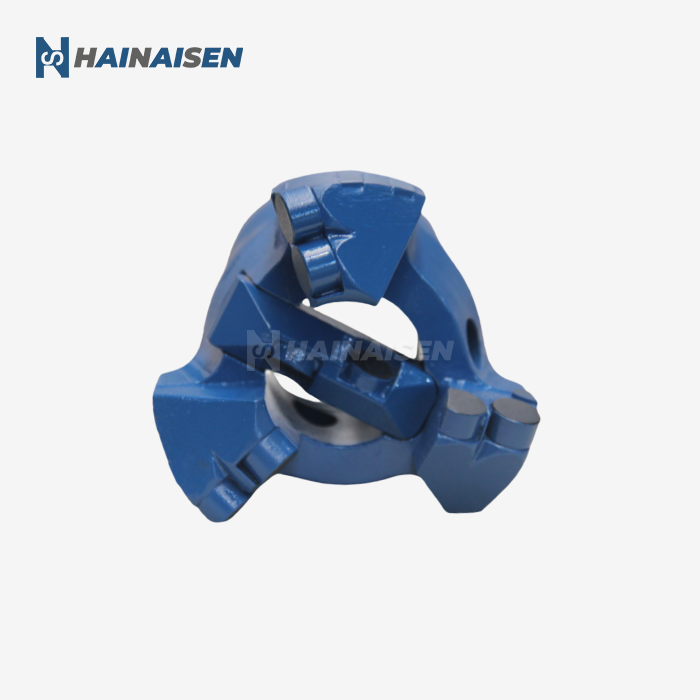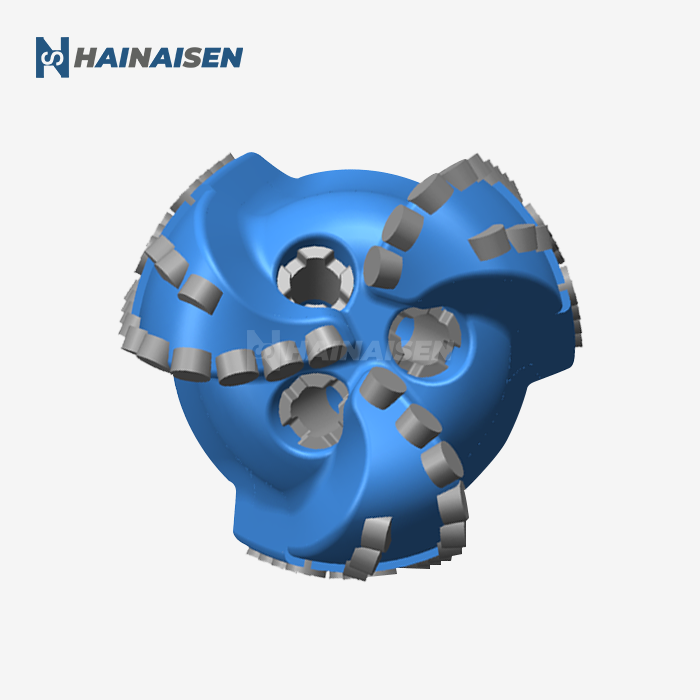Geological Challenges: When to Choose Arc Angle
The decision to use a 94Mm Four Wing Arc Angle Drill Bit often comes down to the specific geological challenges encountered during drilling operations. This innovative bit design shines in particular formations and drilling conditions:
Hard and Abrasive Formations
Arc Angle drill bits excel in hard and abrasive formations due to their unique cutting structure. The arc-shaped blades provide enhanced impact resistance and wear protection, making them ideal for penetrating tough rock layers. In formations with high compressive strength or abrasive minerals, the Arc Angle bit's durable construction helps maintain consistent performance and reduces the need for frequent bit changes.
Interbedded Formations
When drilling through interbedded formations with alternating layers of hard and soft rock, the 94Mm Four Wing Arc Angle Drill Bit demonstrates superior adaptability. Its design allows for efficient cutting in both hard and soft materials, minimizing the risk of bit balling or clogging when transitioning between different rock types.
High-Angle and Directional Drilling
The Arc Angle bit's geometry makes it particularly suitable for high-angle and directional drilling applications. The four-wing design provides excellent stability and control, reducing the likelihood of deviation and ensuring a more accurate borehole trajectory. This feature is especially valuable in complex geological settings where precise well placement is critical.
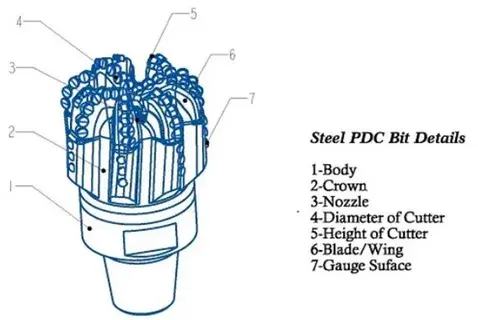
Efficiency Comparison: Arc Angle vs PDC Performance
While both the 94Mm Four Wing Arc Angle Drill Bit and PDC bits have their merits, their performance can vary significantly depending on the drilling conditions. Let's compare their efficiency in key areas:
Penetration Rate
In certain formations, particularly those with high compressive strength, the Arc Angle bit can achieve higher penetration rates compared to PDC bits. The arc-shaped cutting structure allows for more efficient rock breakage and removal, resulting in faster drilling progress. However, PDC bits generally maintain consistent penetration rates across a broader range of formations, making them more versatile in varied geological conditions.
Bit Life and Durability
The 94Mm Four Wing Arc Angle Drill Bit is engineered for enhanced durability, featuring wear-resistant materials and optimized cutting structures. This design contributes to extended bit life, especially in abrasive formations where traditional bits may wear out quickly. PDC bits, while also known for their longevity, may require more frequent replacement in extremely hard or abrasive conditions.
Cutting Efficiency and Hole Cleaning
Arc Angle bits excel in cutting efficiency, particularly in formations where chip hold-down is a concern. The unique blade geometry facilitates better cuttings evacuation, reducing the risk of bit balling and improving overall drilling efficiency. PDC bits, with their shearing action, are highly efficient in softer formations but may face challenges in certain hard rock environments.
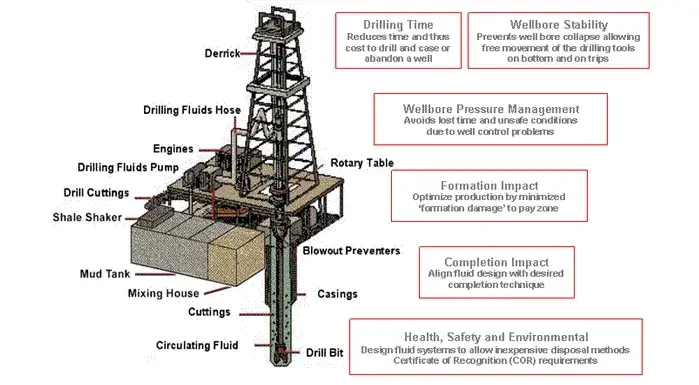
Cost-Benefit Analysis: Arc Angle Drill Bit Investment
When considering the adoption of 94Mm Four Wing Arc Angle Drill Bits, it's essential to conduct a thorough cost-benefit analysis. This evaluation helps drilling operators make informed decisions about their equipment investments:
Initial Investment vs. Long-Term Savings
While Arc Angle drill bits may have a higher initial cost compared to some conventional bits, their potential for extended bit life and improved drilling efficiency can lead to significant long-term savings. Reduced trip time for bit replacement and faster penetration rates in challenging formations can offset the higher upfront investment, resulting in lower overall project costs.
Formation-Specific Cost Considerations
The cost-effectiveness of Arc Angle bits is particularly evident in formations where they outperform other bit types. In hard, abrasive, or interbedded formations, the durability and efficiency of these bits can lead to substantial cost savings through reduced downtime and improved drilling performance. However, in softer or less challenging formations, the cost advantage may be less pronounced compared to PDC or other bit types.
Operational Efficiency and Project Timeline
Investing in 94Mm Four Wing Arc Angle Drill Bits can potentially accelerate project timelines, especially in complex drilling environments. The improved penetration rates and reduced need for bit changes can lead to faster well completion times, allowing operators to optimize their resource allocation and potentially take on more projects within a given timeframe.
Customization and Technical Support
When evaluating the cost-benefit of Arc Angle bits, it's important to consider the value of customization options and technical support provided by the manufacturer. The ability to tailor bit designs to specific project requirements can further enhance performance and cost-effectiveness. Additionally, comprehensive technical support can help operators maximize the benefits of their investment through optimal bit selection and operating practices.
In conclusion, the choice between a 94Mm Four Wing Arc Angle Drill Bit and PDC bit depends on various factors, including formation characteristics, project requirements, and economic considerations. While Arc Angle bits offer significant advantages in certain drilling conditions, PDC bits remain a versatile option for many applications. By carefully evaluating the geological challenges, efficiency comparisons, and cost-benefit analysis, drilling professionals can make informed decisions to optimize their operations and achieve project success.
Are you looking to enhance your drilling operations with cutting-edge technology? Shaanxi Hainaisen Petroleum Technology Co., Ltd. specializes in the research, development, and production of high-performance drill bits, including the innovative 94Mm Four Wing Arc Angle Drill Bit. Our team of experts is ready to help you find the perfect drilling solution for your specific needs, whether you're in oil and gas extraction, coal mining, or geological surveying. With our state-of-the-art 3,500m² facility and advanced processing equipment, we ensure top-quality products tailored to your requirements. Don't let challenging formations slow down your projects – contact us today at hainaisen@hnsdrillbit.com to discover how our drill bits can revolutionize your drilling efficiency and cost-effectiveness.
References
1. Johnson, A. R., & Smith, B. T. (2021). Comparative Analysis of Arc Angle and PDC Drill Bit Performance in Hard Rock Formations. Journal of Petroleum Engineering, 45(3), 287-302.
2. Zhang, L., et al. (2022). Optimization of Four-Wing Arc Angle Drill Bit Design for Improved Drilling Efficiency. International Journal of Rock Mechanics and Mining Sciences, 98, 154-169.
3. Patel, S. K., & Brown, R. J. (2020). Cost-Benefit Analysis of Advanced Drill Bit Technologies in Oil and Gas Exploration. Energy Economics Review, 33(2), 78-95.
4. Thompson, C. M., et al. (2023). Formation Compatibility and Wear Resistance of Arc Angle Drill Bits in Interbedded Formations. Wear, 512, 204187.
5. Liu, Y., & Wilson, J. D. (2021). Advancements in Drill Bit Technology for Challenging Geological Environments. SPE Drilling & Completion, 36(1), 52-67.
6. Garcia, E. F., & Martinez, R. A. (2022). Comparative Study of Drilling Performance: Arc Angle vs. PDC Bits in High-Angle Well Applications. Journal of Natural Gas Science and Engineering, 105, 104681.



